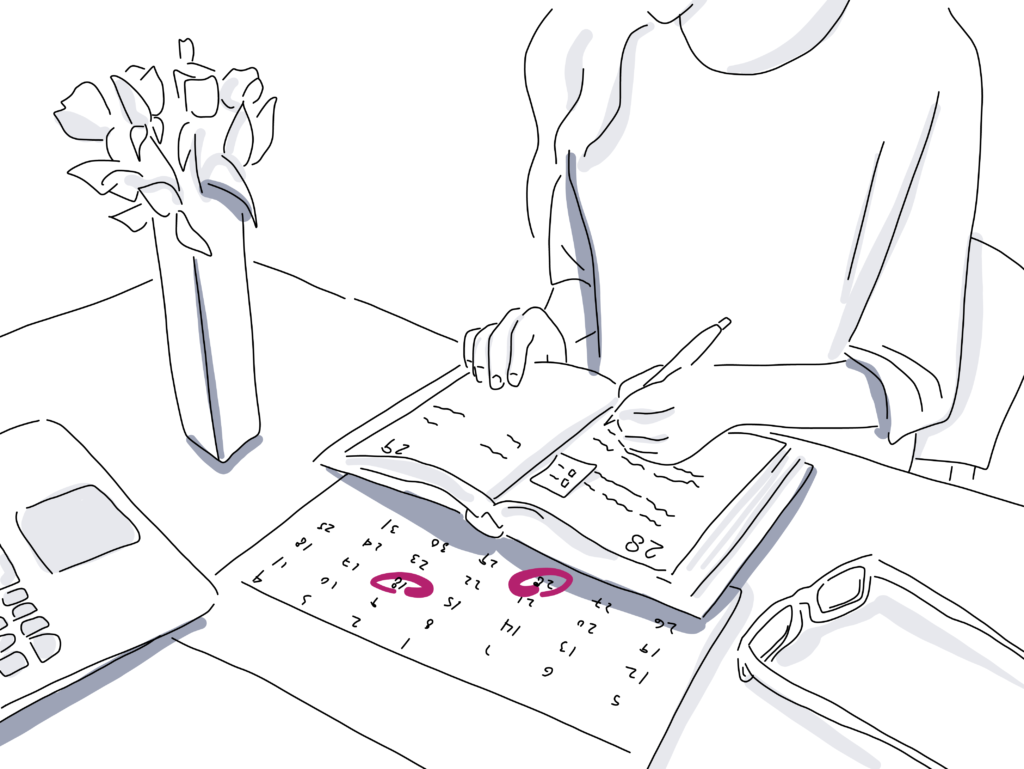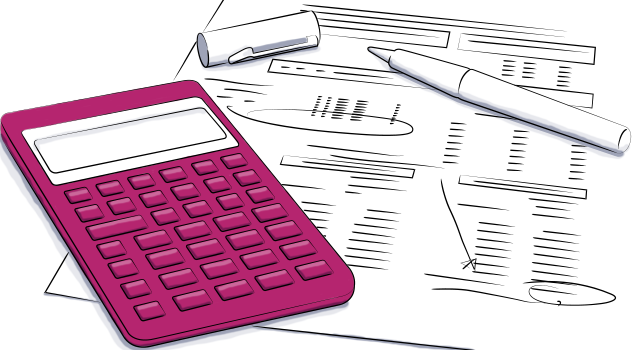
How to Create a Customized Event Planning Checklist
Planning an event involves layers upon layers of details. From the pre-planning stage to the day-of-event logistics, there’s a lot to keep track of. If you keep all those details in your head, the event day will undoubtedly be chaotic and stressful.
To say the least, that’s counterproductive.
A checklist for your event can make a huge difference! At the same time, no two events are the same, so there’s no such thing as a one-size-fits-all event planning checklist.
Instead, we suggest creating a customized event planning checklist. This not only keeps you on target, but it will also provide essential information to the event team, who can work with you to execute an amazing event. Just follow these steps to create a checklist that will keep you on track and executing flawlessly.

1. Create an event planning checklist template.
As you create your checklist, put all the items into a template. You can create your own in Microsoft Excel or Google Docs, or find a template online. You can also use a project management app, such as Asana or Podio, that let you work collaboratively with your event staff.
Once you have a template, you can fill it in with specific to-dos as you think of them. Work backward from the event and create a timeline of tasks and a schedule of deadlines, which assures that every minute detail gets covered.
2. Establish the event essentials.
Next up is to determine some of the key elements of your event:
- Date and time: Where will the event happen and what time? Consider how the date fits into attendees’ schedules.
- Location: Think about where the event is geographically (which city makes the most sense) as well as the venue. Create checklist items: Research, interviewing vendors, signing the contract, etc.
- Type of event: Is it a conference? A party? You likely already know this, but it’s good to write it down and communicate it clearly.
- Event goal: The overall reason for hosting an event. For example, it could be fundraising, celebrating employee success, or launching a new product.
- Event objectives: How will you measure you met the event goal? For instance, if the goal is fundraising, an objective might be to raise $1,000 or receive 50 pledges of support.
- Audience: You need to clearly understand what expectations attendees have of the event. If you don’t meet their needs, then the desired guest action is less likely to happen.
Make each of these things a to-do item on your checklist to make sure you don’t skip these steps.

3. Build an event budget.
When you think about every event expense, creating an event budget seems daunting. With a Microsoft Excel spreadsheet, it’s not that complicated. Start with the major categories, such as catering, décor, and rentals. Then, breakdown all the expenses under each category and let Excel do the work for you.
Under this section of your to-do list, you can add smaller tasks like:
- Researching costs of rentals
- Contacting vendors for quotes
- Negotiating discounts with vendors
- Paying deposits
All that is to say: The event budget isn’t a single checklist line item that can simply be marked off. Your budget is a living, breathing document, and this format encourages you to keep revisiting all aspects of the event until it is as cost-effective as possible.
4. Create the event design.
This is the heart of event planning because it includes the event components that impact guests the most.
We’ll go over some of the broad elements of event design. As you think about these, consider the specific tasks you need to add to your event checklist.
Program
The program tells the story of the event goal and objectives. Each story element leads to the next story element, which builds anticipation during the event. The peak of that anticipation should be dramatic. It is what you want your guests to remember the most. An event checklist helps layout the story by breaking down the timeline of the event.
On your checklist for event planning, the program comes to life by:
- Planning the program agenda
- Mapping out the program timeline
- Hiring vendors or entertainers to bring the program to life
- And more
Layout
How you’re using your space ” all the way down to the seating arrangments ” can make all the difference. And we’re not just talking about the seating chart: Consider the placement of electrical cords and bussing stations, for instance.
On your event checklist, include a task to visually laying out the event space. A user-friendly tool like Social Tables’ Diagram can help you map it out and easily share your layout with clients and vendors.
Theme
Choosing an event theme isn’t just for fun. The theme represents the event message and serves other essential purposes, such as:
- Creating buzz. The guests’ event experiences begin long before the event. A themed invitation and social media posts create anticipation and set the tone for the future event.
- Connecting the elements of your event. A theme connects the individual event components (such as décor, catering, and entertainment), thereby layering the event message into a cohesive guest event experience.
- Making the event memorable. If a guest attends an event with a ’50s diner theme, the next time they see a diner on TV or eat a meal at a diner, they’ll likely recall the diner-themed party. That also means they’ll think of your business, product, or brand.
5. Plan out the décor.
Décor isn’t just pretty ” it’s crucial for a successful event. And since it runs the gamut from rentals and florals to tablecloths and accent pieces, it can be a lot making sure that you’re covering all your bases.
Your guests experience the event through their five senses, so make sure
- See: What visual elements can elevate your event? What type of lighting or decor will you include?
- Hear: Will there be music? What about presenters or speakers? What should guests be listening
for ? - Smell: Even if it’s in the background,
smell is always there. Should guests smell candles, food, flowers, or something else? - Touch: Will guests interact with any elements of your event? And yes, picking up silverware or barware counts!
- Taste: Food can make or break an event! More on food in a moment.
Once you plan out all these elements, add them all to the checklist: Hiring vendors, sourcing supplies, setting everything up and more.

6. Get creative with food and drink.
Food & beverage can be the most important components of an event because sharing a meal is a true community experience. Food is associated with nurturing, so this is an opportunity for the host to illustrate thoughtful hospitality.
The checklist for planning event food includes a lot. Here’s just a sample:
- Researching and interviewing vendors
- Determining the type of service (seated dinner, food stations, passed appetizers)
- Planning a menu around dietary restrictions
Your checklist helps you chart those nuances so that you pick the perfect caterer, keep your menu on-trend, protect the planet, and, most importantly, leave your guests feeling nurtured and nourished.
7. Hire entertainment and plan guest experiences
If you plan to hire speakers or entertainers, you need to add several items to your checklist. For example:
- Sign contracts
- Book hotel rooms for VIPs
- Set up transportation for VIPs
- Set up a green room
- Promote keynote speakers
In addition to speakers and entertainers, you’ll also need to coordinate interim entertainment, such as:
- Photo
booths - Guest engagement stations
- Relaxation
areas
8. Map out a marketing plan.
Event marketing creates buzz, builds anticipation, and guarantees a good turnout.
It can also involve a lot of details, like:
- Custom logos and branding
- Printed flyers
- Paid advertisements
- Dedicated event emails
- Social media posts
- Marketing budget
An event checklist will help map the pre- and post-event marketing strategy across all of those channels. This is where an online project management tool will be especially handy for you and your team.
9. Plan for little details and the unexpected.
It’s the little details that make a big difference. That’s why you’ll want to keep track of every minute thing that can affect the guest experience.
Here are just a few things to consider:
- If you plan to put directions on the event’s website, make sure they are correct
- What transportation options do guests have? Will there be parking?
- How will you handle event registration? Will the lines get too long?
- What about guest access to Wi-Fi and electrical outlets?
- What if someone has a medical emergency?
- Will there be signs to direct guests around the venue?
- Do you have a plan for event security?
Those are the small, but very important details that need to be added to a meeting planner checklist.
10. Create a chart of event-day logistics.
Plan to create a logistics timeline for the event: a minute-by-minute schedule of everything from vendor arrival and set-up to run-through and post-event breakdown.
There are many moving parts on event day, and inevitably, unexpected situations will arise. If you don’t have the day-of-event details outlined to a tee, you will miss something, which will show up later as a big problem. There’s no need for that added stress when you can use your checklist to create a thorough day-of-event schedule.
Pro tip: You can create a visual layout of your event using space planning software and share it with catering staff and other collaborators before the event to cut down on potential mishaps.
11. Plan to follow -up after the event.
After your guests leave the event feeling all warm and fuzzy, touch base with them. This is an opportunity to reinforce the event message and get feedback, as well as prompt guests to take action to meet event objectives.
When putting together your list, contemplate a variety of post-event communication methods that will achieve those results, such as sharing event photos, sending a thank you note, posting on social media, or linking to event materials. The checklist will not only help you manage the tasks, but track the results.
12. Take time to debrief and write a post-event analysis.
Shortly after the event, you will want to sit down with your team, talk about what went right, and what can be improved. On an event planning checklist, you can list criteria to consider that will map back to your event goals.
That completed list of criteria will provide information for a comprehensive post-event analysis to be written. And, a post-event analysis will contribute to the return on investment report, where you can find out if you met your event objectives.
This information is valuable in analyzing your skill as an event planner, reporting goal and objectives results to your company, and constantly building upon the success of each event.
Additional resources for building your event planning checklist
- The 9 Best Event Management Tools On The Market
- The Essential Audio & Visual Checklist for Event Planners
- 15 Must-Have Items Every Planner Should Bring to an Event
- The 6 Must-Have Event Planner Skills You Need for Career Success
- 20 Contract Strategies to Close More Group Business
Try this approach when making your next day-of event checklist.
Don’t think of your event planning checklist as just a to-do list. It’s a fluid document. With your checklist in hand, you should be able to visualize the event from all perspectives ” client, event team, vendors, and, most importantly, the guest.
Invest the time, and amazing execution will follow. Use our Event Planning App to keep everything in its place.
Have more questions about event planning checklists?
The key aspects of an event checklist are the essential components of your event so get those squared away first: date, location, type of event, goals, and budget. Once those are in place, the rest of the details can be built to accommodate the major components.
Set a budget, establish goals, find a location, pick an audience, design the event, secure F&B, plan experiences, iron out logistics, and plan for contingencies.
